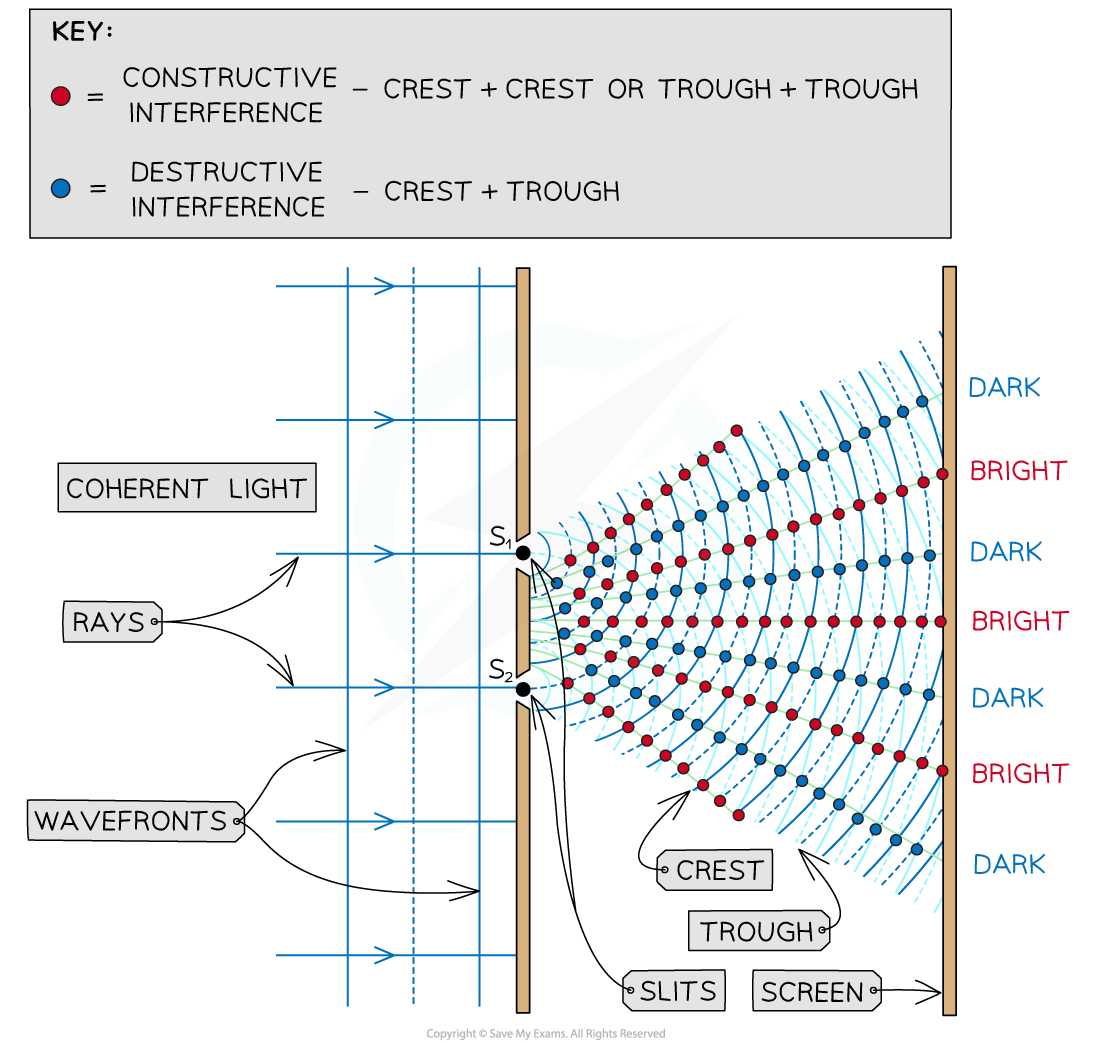Double-Slit Interference
- Interference occurs whenever two or more waves combine to produce a resultant wave with a new resultant displacement
- The waves combine according to the principle of superposition
- Constructive interference happens when the resultant wave has a larger displacement than any of the individual displacements
- Destructive interference happens when the positive displacement of one wave and the negative displacement of another wave exactly cancel out giving a resultant displacement of zero
Coherence
- Interference is only observable if produced by a coherent source
- Waves are said to be coherent if they have:
- A constant phase difference
- The same frequency

Coherent waves (on the left) and non-coherent waves (on the right). The abrupt change in phase creates an inconsistent phase difference
- A coherent beam of light contains light waves that are monochromatic and have a constant phase difference
- Monochromatic light consists of light waves of a single frequency
- Laser light is an example of a coherent light source
- Filament lamps produce incoherent light waves
Double-Slit Interference of Light
- When a coherent beam of light is incident on two narrow slits very close together, diffraction occurs at each slit (i.e. the waves spread out)
- As the diffracted waves cross, they interfere with each other
- If a screen is placed some distance away from the slits, a pattern of equally spaced bright and dark fringes is observed on the screen
- The bright fringes form where the waves interfere constructively (i.e. a crest meets a crest or a trough meets a trough)
- The dark fringes form where the waves interfere destructively (i.e. a crest meets a trough)

Coherent light waves interfere after passing through two narrow slits. Alternating bright and dark fringes are observed on the screen




